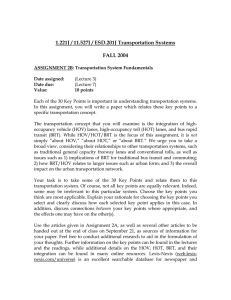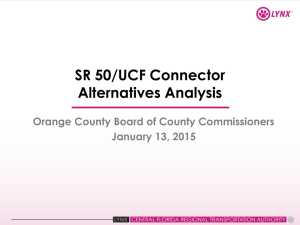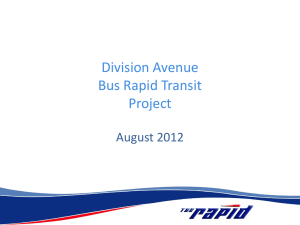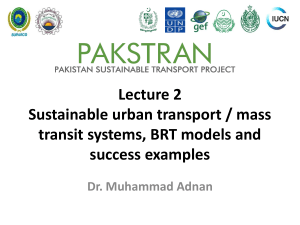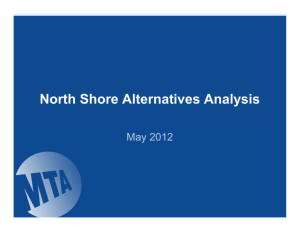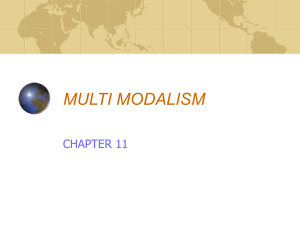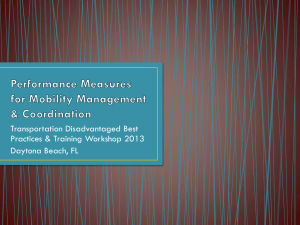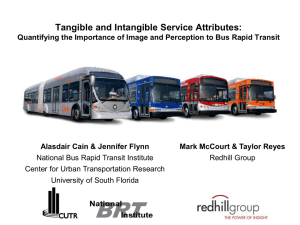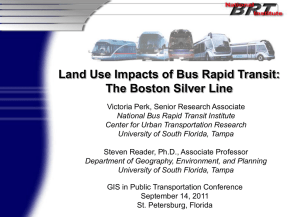presentation - Metropolitan Planning Council
advertisement
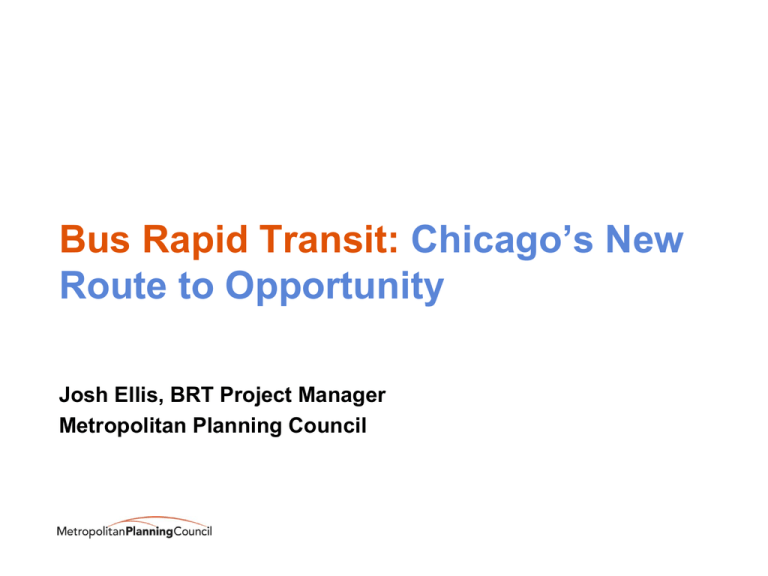
Bus Rapid Transit: Chicago’s New Route to Opportunity Josh Ellis, BRT Project Manager Metropolitan Planning Council Who is MPC? • Since 1934, the Metropolitan Planning Council (MPC) has been dedicated to shaping a more sustainable and prosperous greater Chicago region. As an independent, nonprofit, nonpartisan organization, MPC serves communities and residents by developing, promoting and implementing solutions for sound regional growth. Livability Principles • • • • • • Provide more transportation choices Promote equitable, affordable housing Enhance economic competitiveness Support existing communities Coordinate policies and leverage investment Value communities and neighborhoods – http://www.dot.gov/livability/101.html Key Features of BRT Pay-before-you-board stations Mexico City, Mexico At-grade boarding Rouen, France Dedicated bus lanes Bogotá, Colombia Signal prioritization Los Angeles, California Values of Bus Rapid Transit (BRT) • Congestion relief: • Chicago’s Cost of Congestion = $7.3 billion/yr • 95% is cost of wasted travel time • Connectivity: • To existing rapid transit network, recreational centers, education, food, medical, jobs, entertainment… • Community: • Creates framework for future complementary development • Cost: • BRT delivers excellent service, costs less, and utilizes existing infrastructure Our methodology Phase I: • Eliminate “special” routes Phase II: • Assess segments by right-of-way for BRT feasibility • Assess segments for livability Phase III: • Fill in gaps to integrate with existing rail and provide connectivity Phase IV: • Assess ridership demand and traffic impacts along routes Phase I – Initial screening and segments Phase II - Right of way 86 ft. segments Flow lanes without stations Travel lanes of 86 ft. Phase II – Right of way 97 ft. segments 2 stations: westbound and eastbound 1 station in the median Phase II - Right of Way 97 ft. segments Travel lanes of 97 ft. that are consistent for at least 3 miles BRT station in median with pre-paid boarding, at grade entrance, and designated bus lanes Phase II – Livability Criterion Rationale for Selection Study Measure Main Corresponding Livability Principles 2) Connectivity to Educational Institutions BRT has the potential to help facilitate the Number of educational movement of residents, students, tourist, institutions within a halfand employees to educational institutions. mile of street segments. 3) Enhance Economic Competiveness 9) Existing Transit Ridership Current bus ridership demonstrates existing demand for transit along the study routes. Average passenger flow by street segment (controlling for direction) during the a.m. peak period. 6) Value Communities and Neighborhoods 1) Provide more transportation choices 13) Population Not Served by Rail Residents not currently well served by rail transit have a particular and pressing need for rapid transit service within walking distance of their homes. Residential population within a half-mile of street segments that also live beyond a half-mile radius of fixed guideway transit (CTA and/or Metra). 1)Provide more transportation choices 2) Promote Equitable, Affordable Housing Phase II - Livability Education Ridership Population > .5mi from Rail • Scoring results from three of the 14 livability criteria – access to education (left), ridership by stop (middle), and population not within walking distance of rail (right). Phase II - Livability Weighted Criteria Criterion Weight (%) 1) Connectivity to Community Services 2) Connectivity to Educational Institutions 3) Connectivity to Entertainment 4) Connectivity to Food Stores 5) Connectivity to Major Medical Care 6) Connectivity to Major Open Space 7) Connectivity to Retail 3.59 8) Employment/Job Access 3.59 9) Population 3.59 10) Existing Transit Travel Time 11) Existing Transit Ridership 12) Transportation Costs 16.17 13) Population not Served by Rail 14) Infill Development Potential 16.17 3.59 3.59 3.59 3.59 3.59 3.59 16.17 16.17 3.00 Phase III – Transit integration and connectivity •21 CTA rail station connections •15 Metra station connections •12 BRT on BRT connections Phase IV – Demand modeling Service Factor Assumptions Headway 5 – 10 minutes (peak) 12 – 15 minutes (offpeak) Station Spacing 2 stations per mile Speeds 20 mph for 20-second stop time 15 mph for 30-second stop time Dwell Time 20 seconds 30 seconds Phase IV – Demand modeling • Impact on transit person trips: – Transit trips with both ends in the BRT network increase by 41,000 daily (14% bump) – Transit trips with either a beginning or end in BRT network increase 6.5% – Total regional transit trips increase 3% – Transit mode share increases: • 12.0% to 13.5% within BRT network • 14.7% to 15.8% for trips with one end in BRT network • 9.7% to 10% regionally Western Corridor • Alternatives Analysis • Community engagement in station areas • Plan for complementary public and private investment • Evaluate sources for funding capital and operations Thank You Josh Ellis Metropolitan Planning Council 312.863.6045 jellis@metroplanning.org See the full report, technical study, and appendices at www.metroplanning.org/brt

